Once we had finished our plans and collected all the resources we needed, the children got to work on their wormery’s. The children had chosen to use cardboard boxes and tubes as the initial construction of their wormery and then wanted to add leaves, sticks and soil to make them really cosy. As the morning progressed, the children’s discussions changed as they wanted to attract more mini beasts into their homes. They began to talk about some of the other mini beasts they may find in their wormerys.
“I’m going to make a rocket ship for the worms. They crawl through the tube and come out the little hole. I will glue the circle on. It’s for the light. My house is for ants”.
-E
“That’s the box and the tube makes the tunnel so they can get through. This tube is a chimney. The leaves are for hiding. It’s going to be for ladybirds!”
- R
Some of the children chose to work together and connect their homes together to make a ‘super home’. They discussed what the mini beasts might do in their houses and where they could be placed in our garden. Theo wanted to add pompoms to his wormery so the creatures inside would feel warm and comfortable. Another child decided to fill their home with leaves, soil and sticks. We quickly ran out of the natural resources but luckily our garden is plentiful in natural materials so we quickly collected more so we could continue with our plans. One child added more and more natural resources he became very excited. He had spotted a mini beast already in his wormery.
“There’s already a bug in mine.I don’t know what type. He’s crawling there, that one! There! That's a beetle. I think he likes it. He’s loving it! He’s loving it! Look, he likes it, look”.
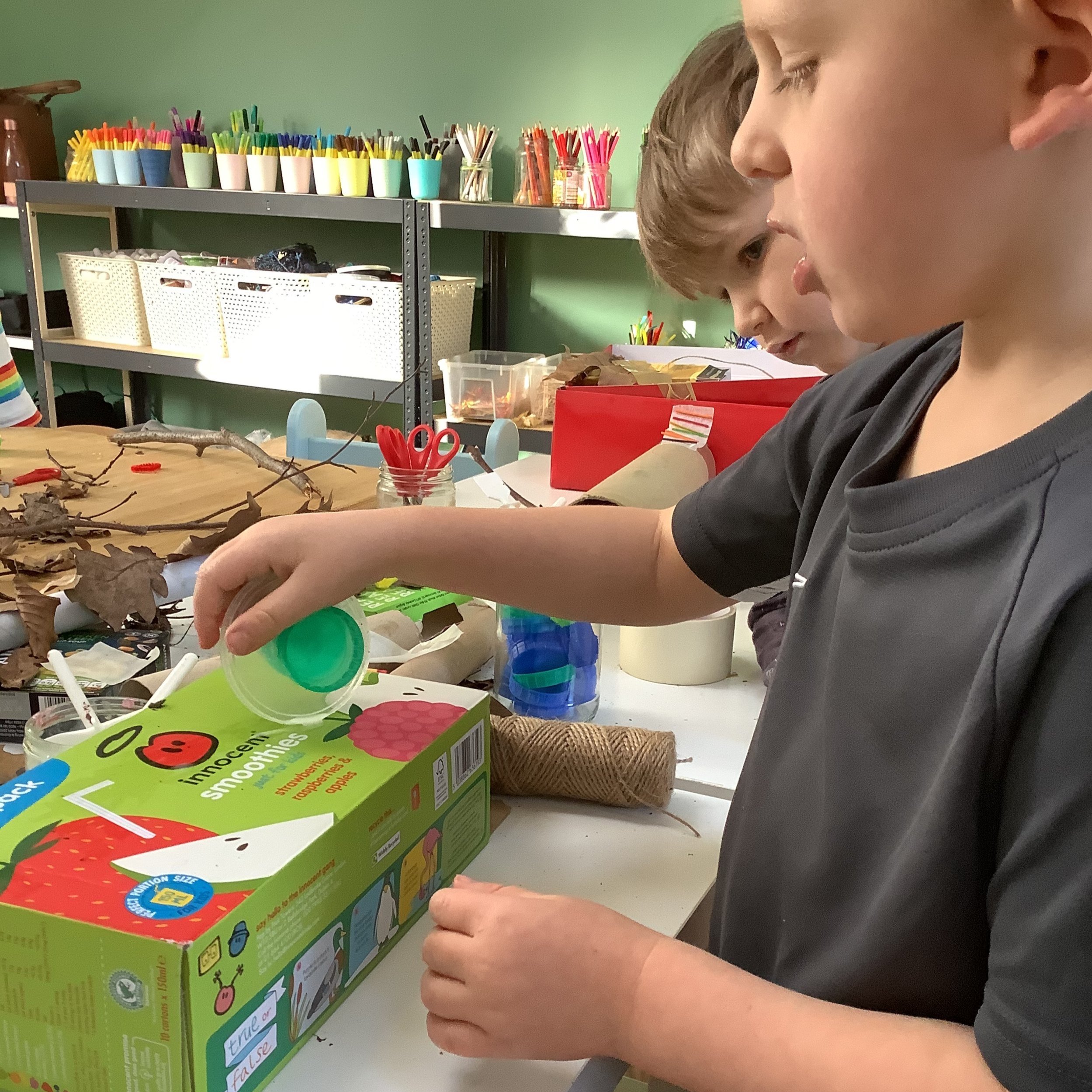
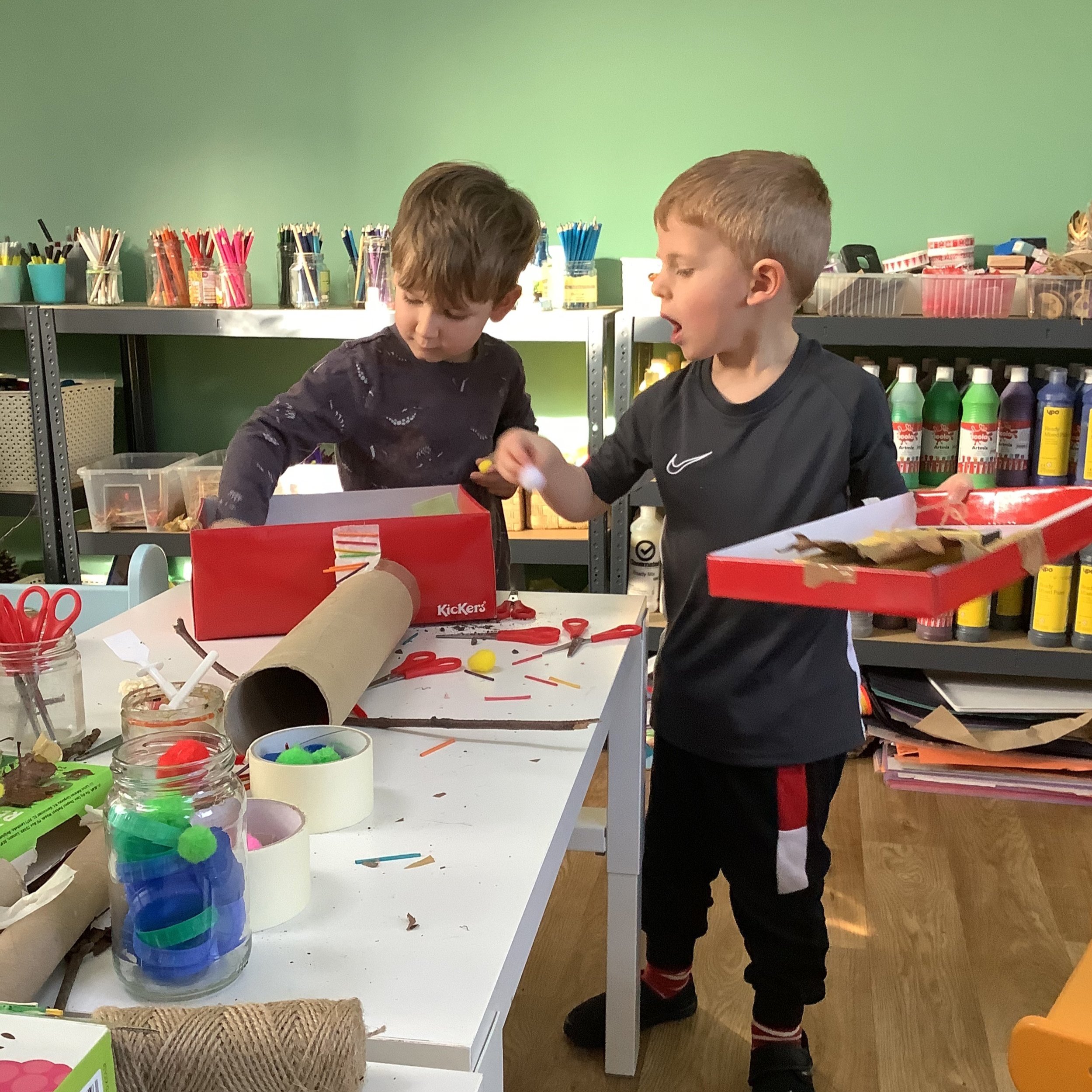
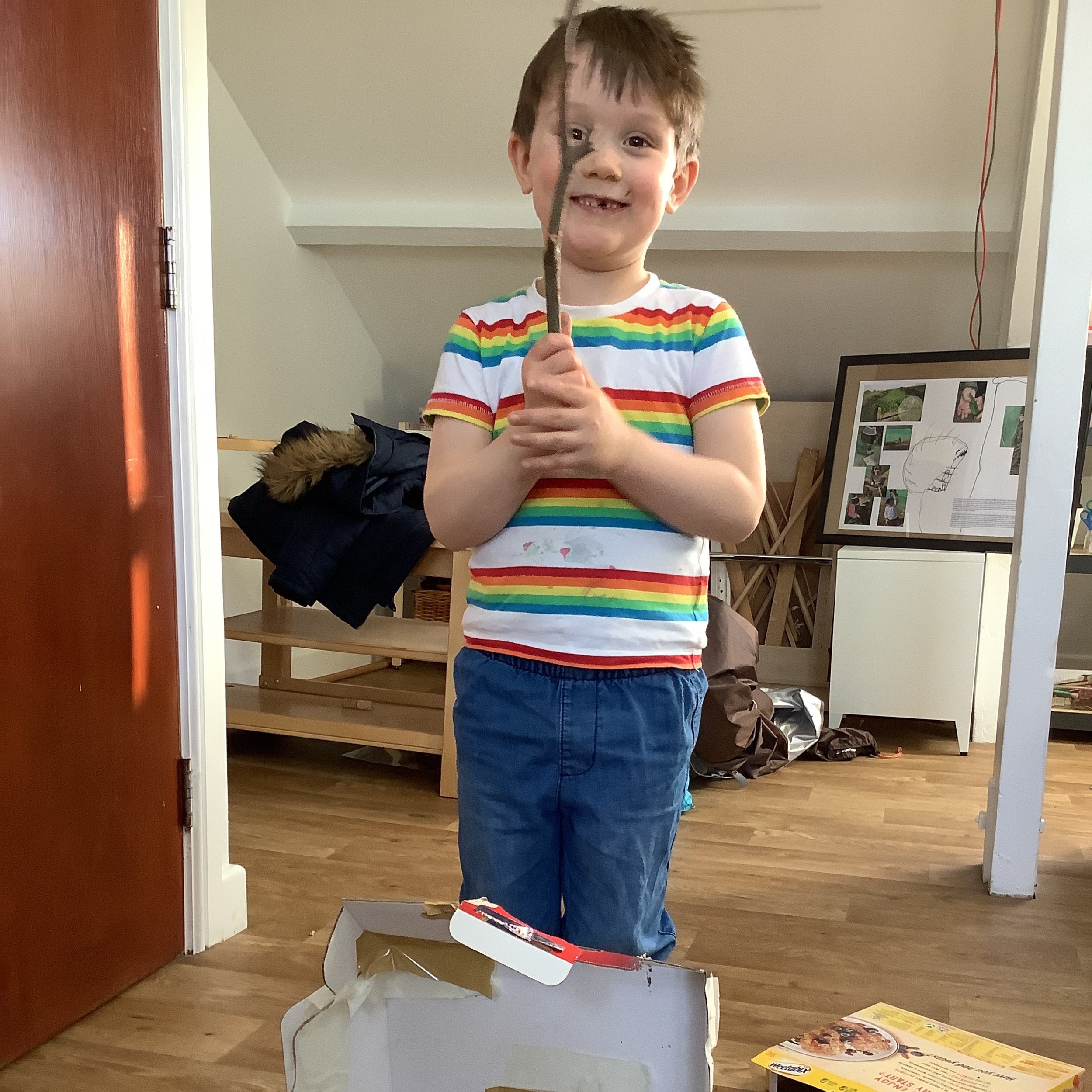


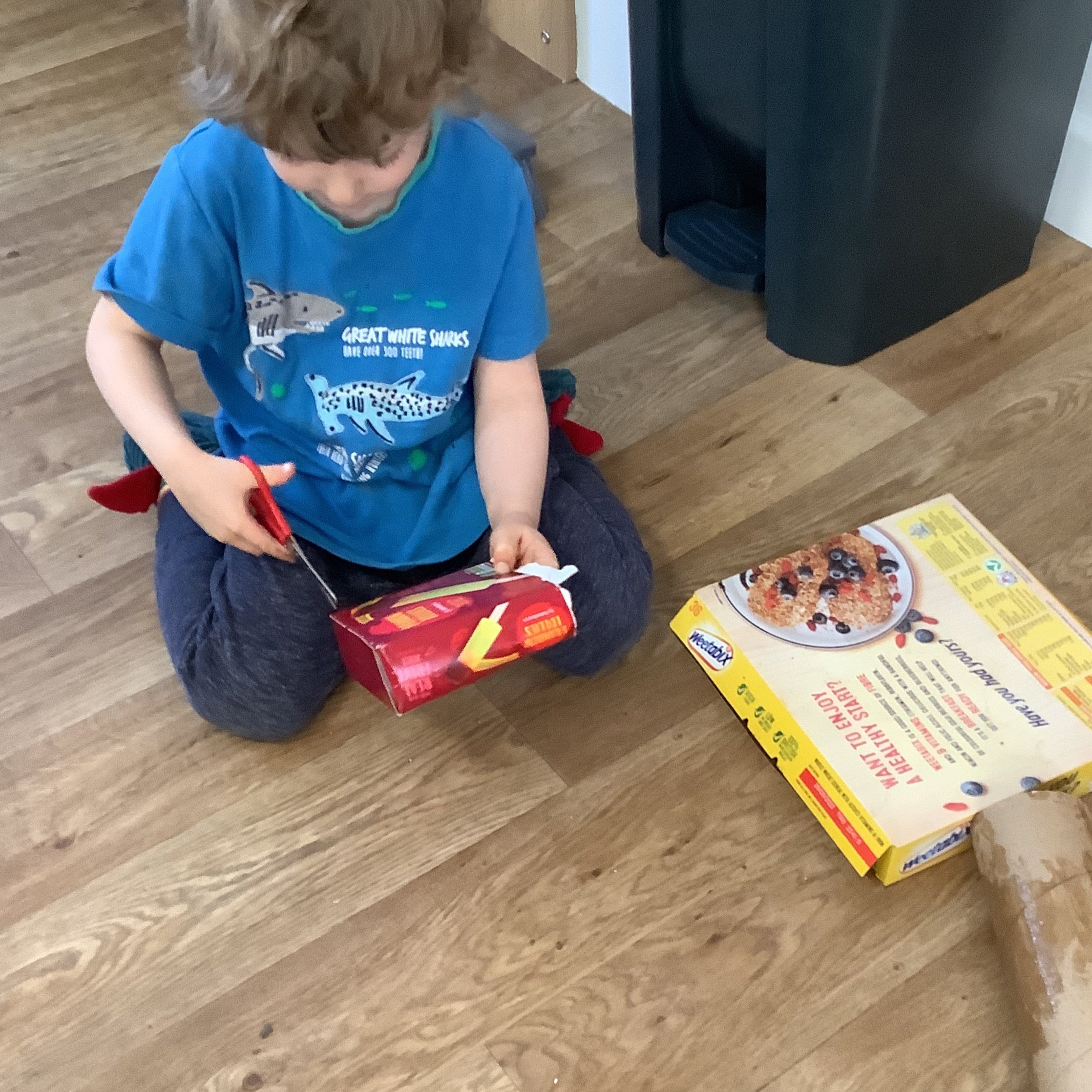
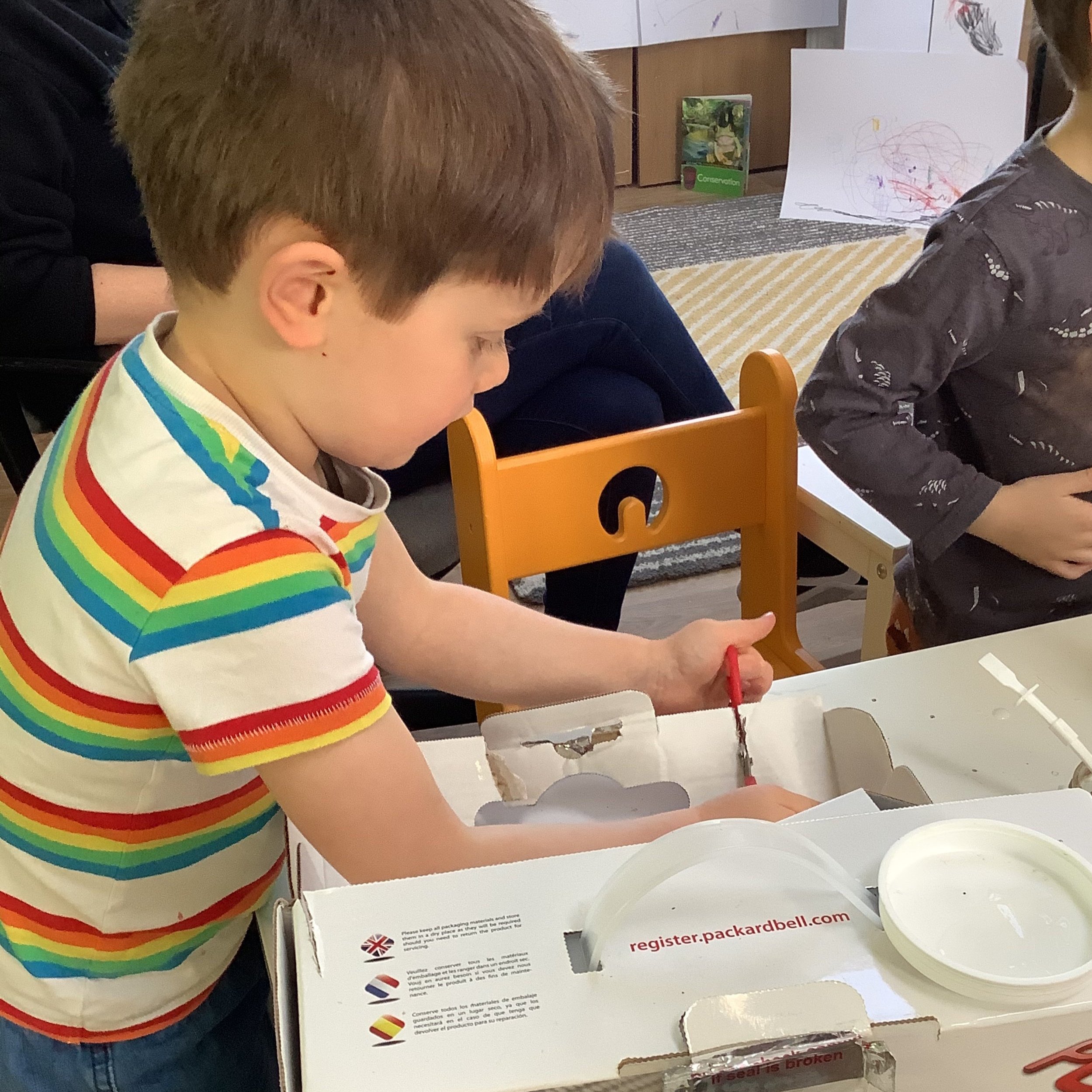
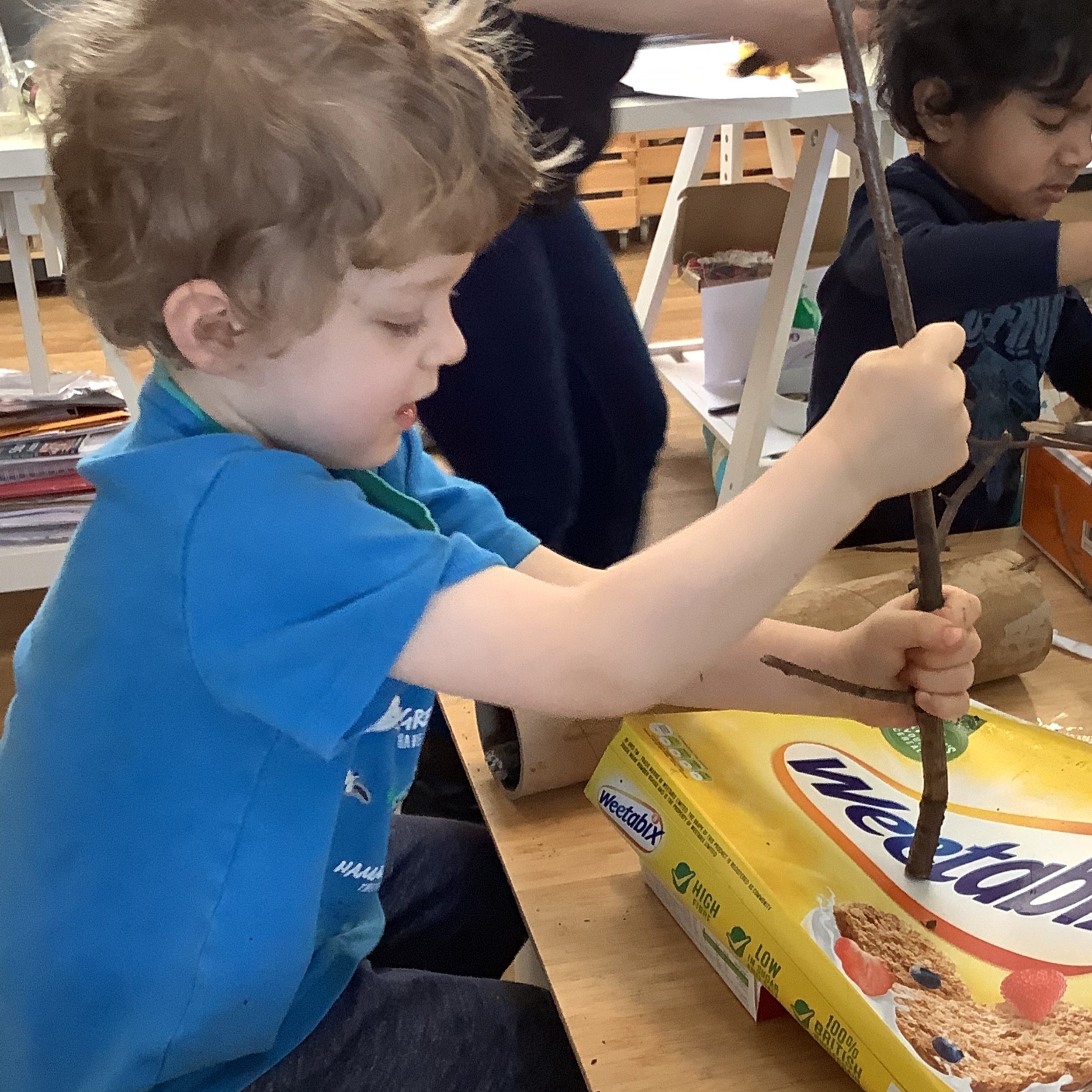
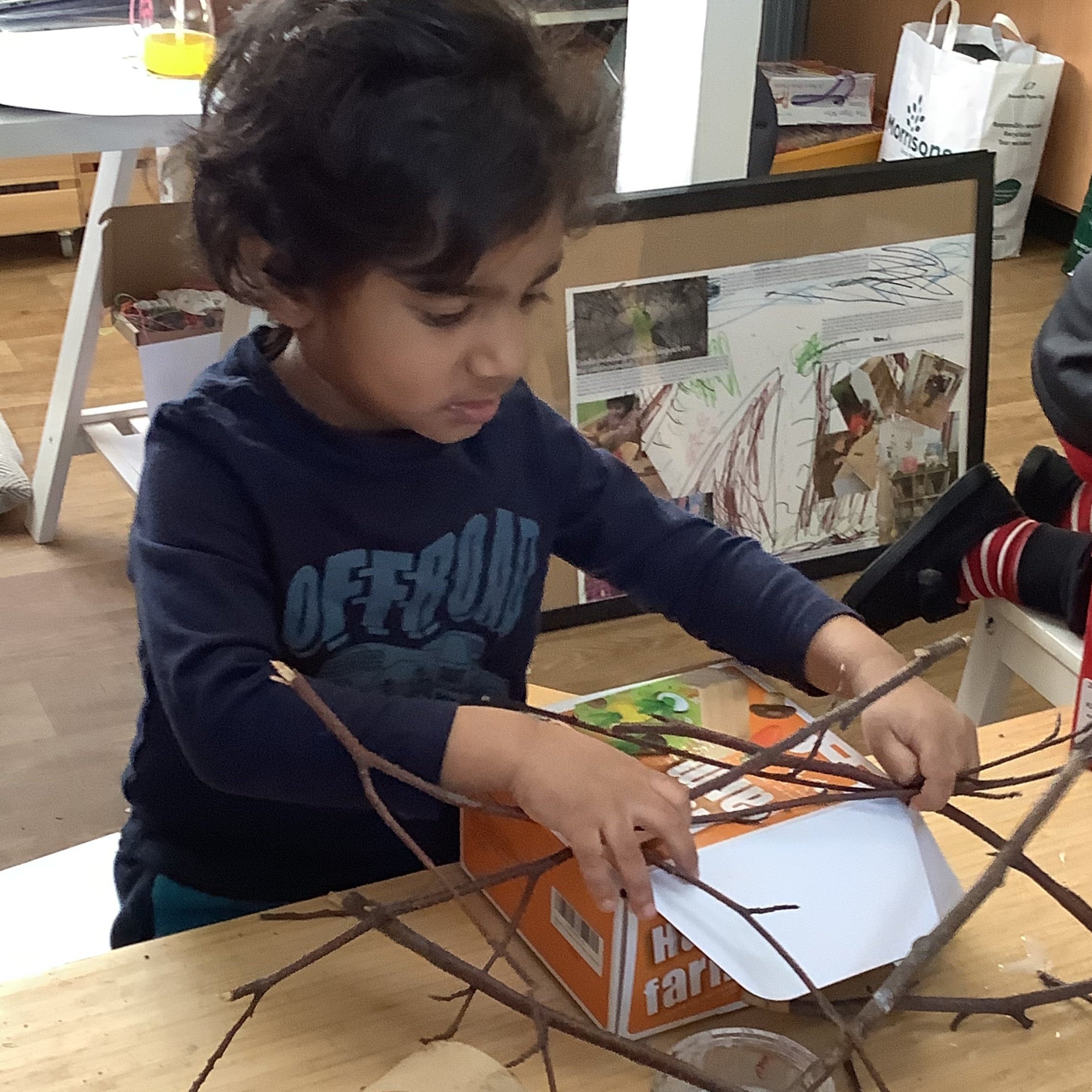
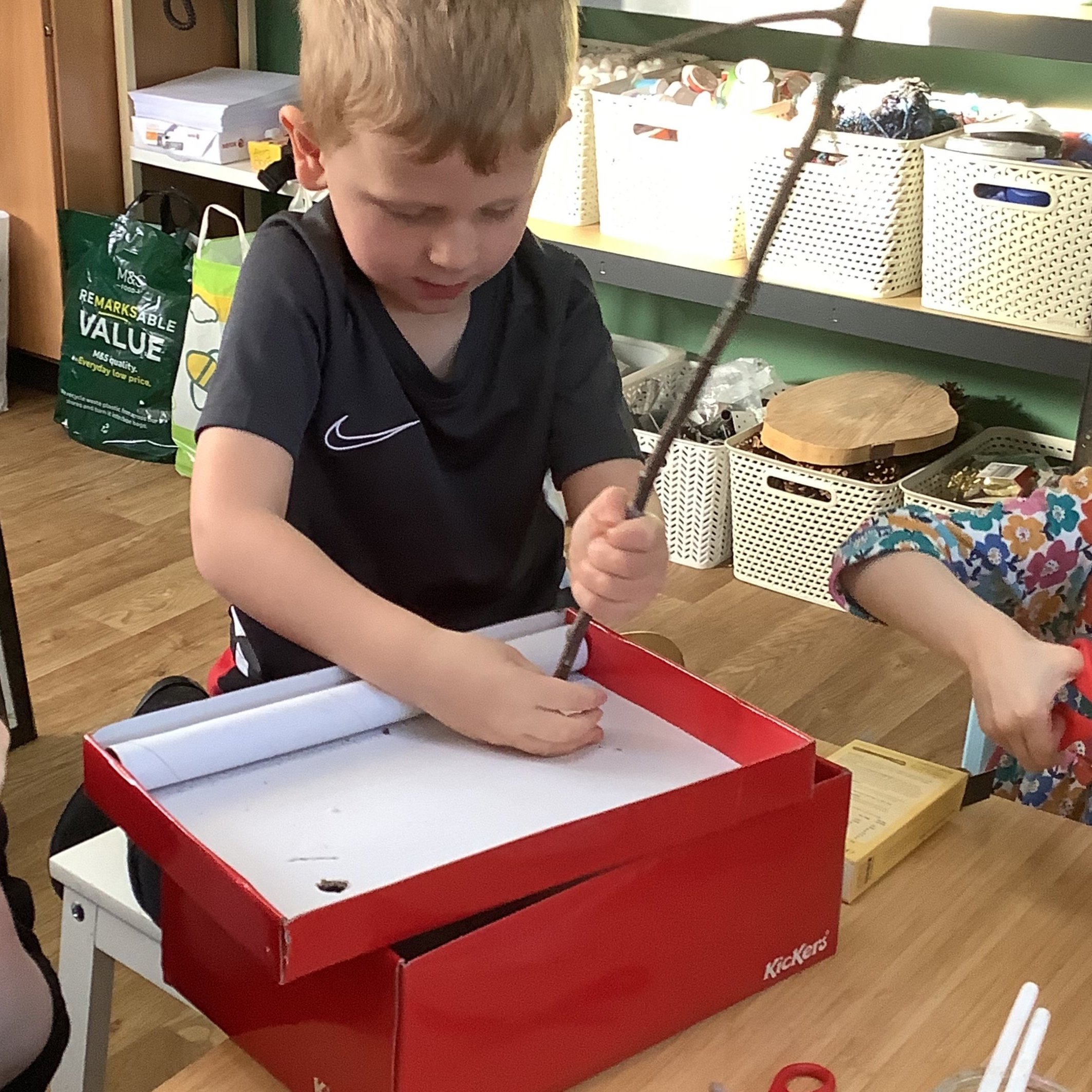
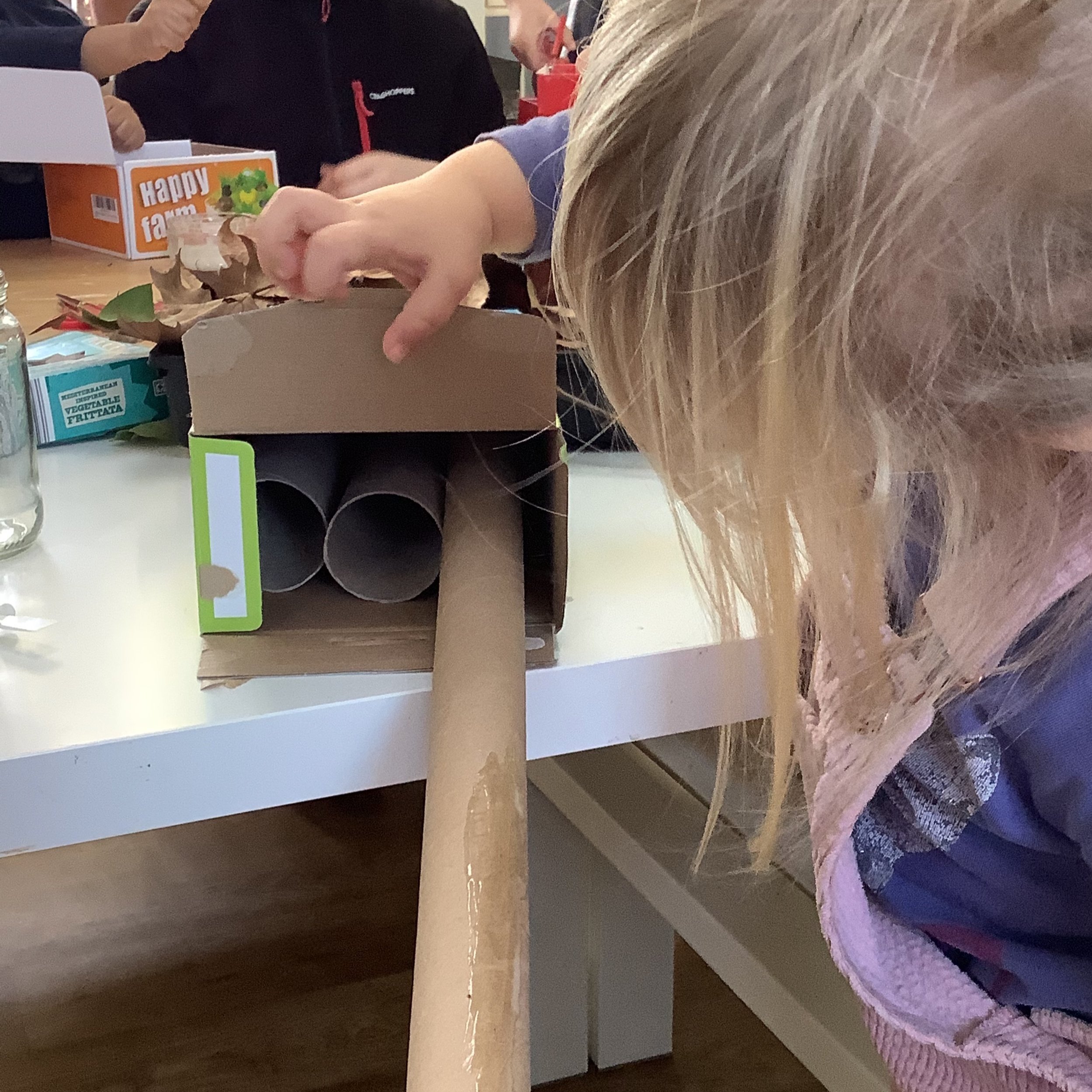
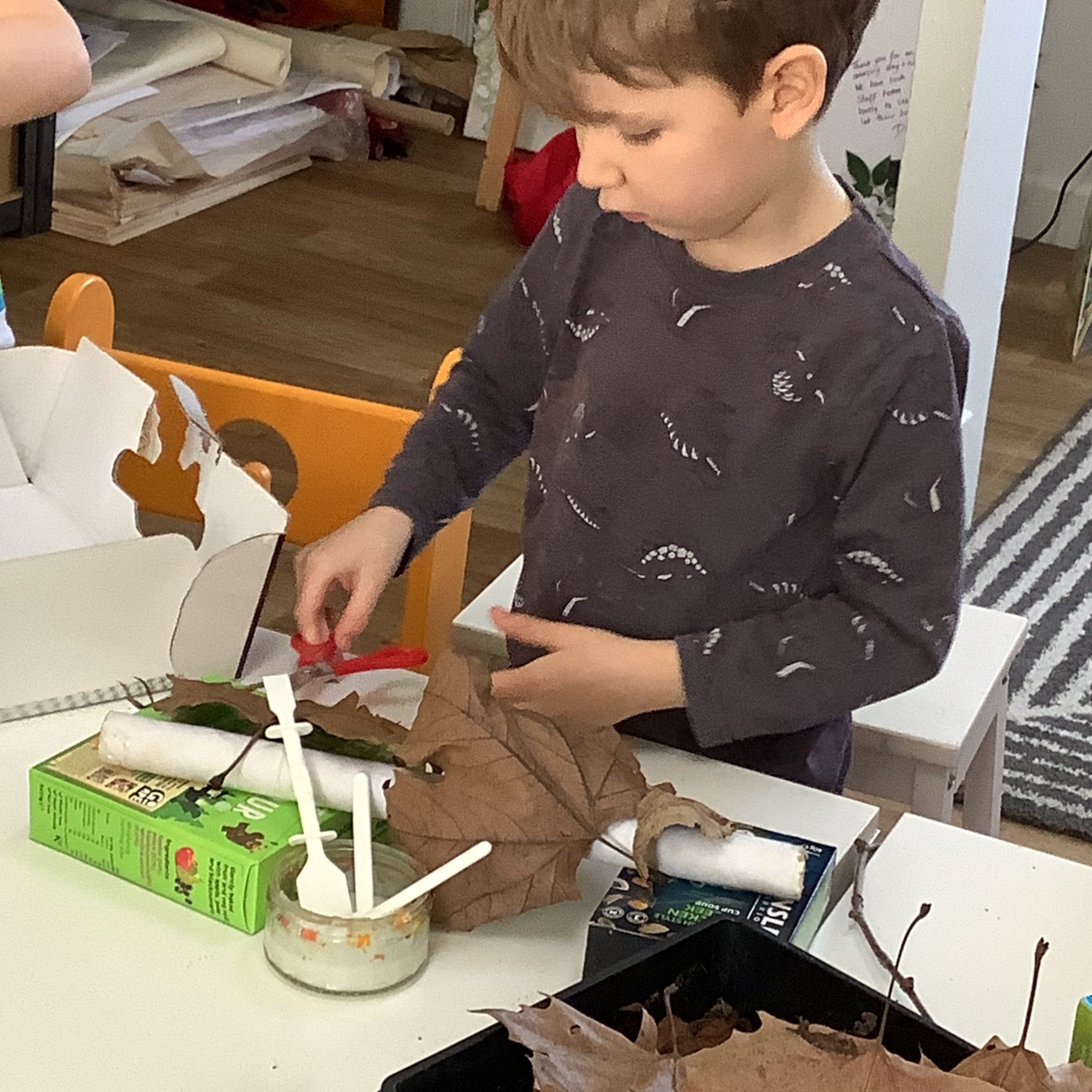
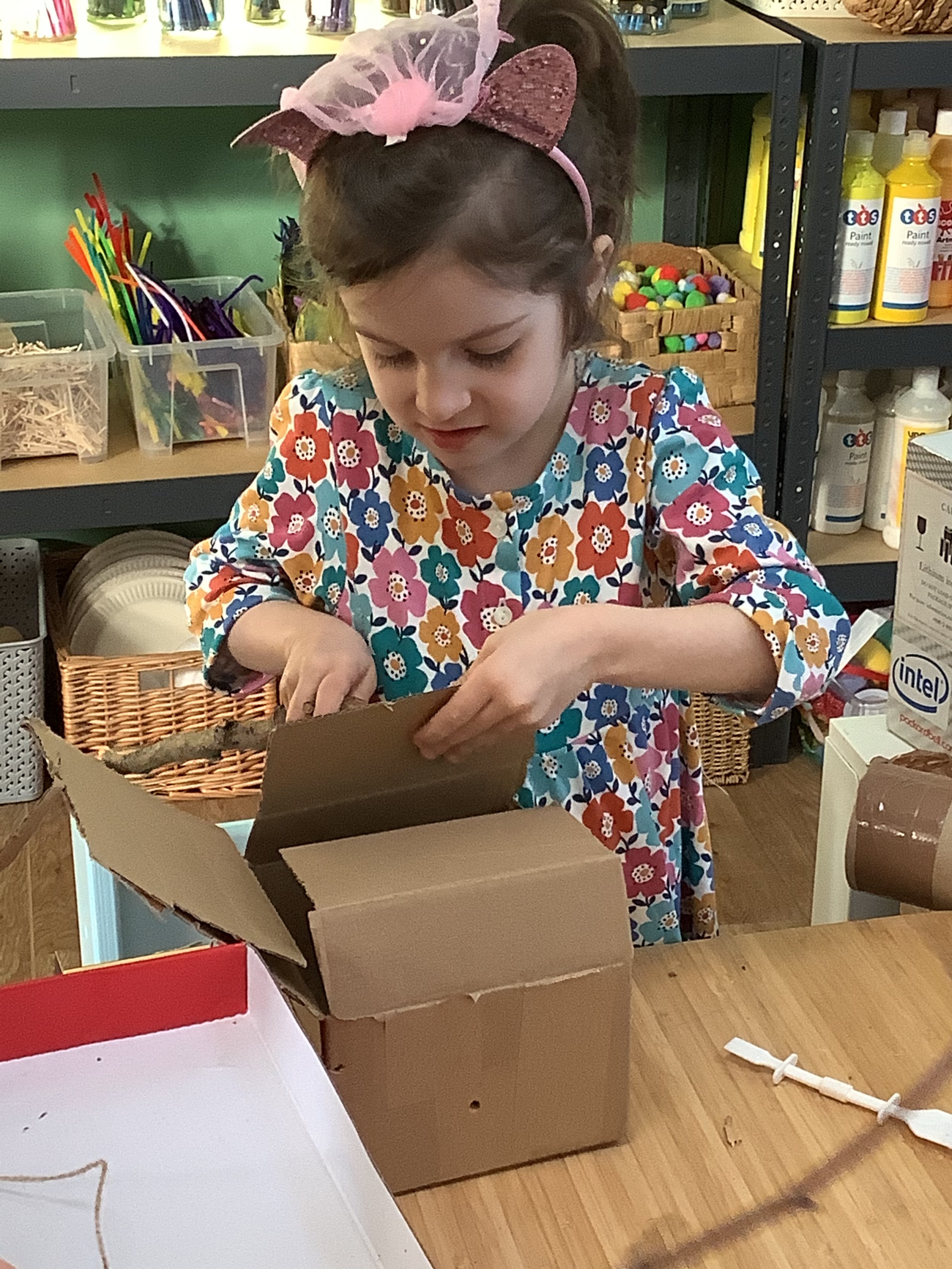

““I’ve made a bed. It goes on the top. We could make a town, a little village with all of our houses. It’s got cushions to sleep on””
